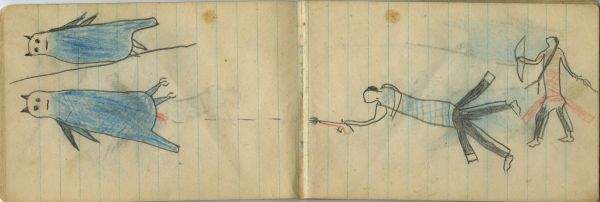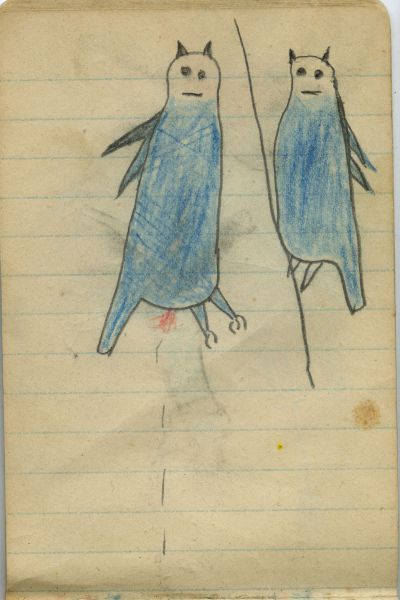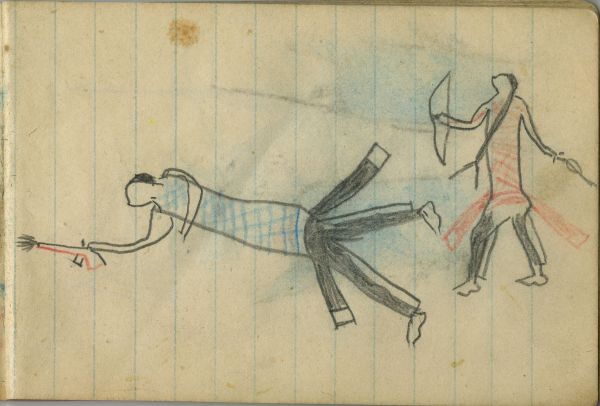HUNTING SCENE: A Diptych of Two Men on Foot Shooting Two Owls
Ethnographic Notes
Horizontal and vertical HUNTING SCENE: A Diptych of Two Men on Foot Shooting Two Owls The two men on the right-hand (dominant position) page, move toward the birds. The man on the left, wearing a blue cross-hatched (gingham or plaid) shirt, is vertical on the page. He holds a pistol in his right hand. The pistol has a dark (lead pencil) line for the top half and red for the bottom half. The firing mechanism is lead pencil. Smoke from the discharge is visible at its tip. The man wears the matching dark (lead-pencil shaded) breech clout and leggings, with undyed selvedges creating trim. His feet are drawn but not details of the moccasins. The man on the right, arranged on the horizontal axis, has long hair tied in otter fur. His shirt is red cross-hatched (gingham or plaid), and his breechclout flaps are red stroud cloth. He has identical leggings to the other man. He holds a bow in his left hand, and he is holding an arrow (only part of it is visible on the small page) in his right hand, as though he is about to raise it to the bow. A faint line leads away from the bow, and faint blue coloring is visible beneath the hunting scene�perhaps an erased drawing. The two owls, vertical on the page, have distinctive round eyes, pricked ears, and large, foreshortened beak. They have large bodies and detailed wings, legs, and tail feathers. Their heads are white (not colored in), and the bodies are blue. The larger one, on the left has distinctly drawn talons. It bleeds from the bottom, from the bullet. The trajectory of the bullet is marked with penciled dashes. The smaller bird on the right, possibly a male (females in most owl species are visibly larger than the males), sits on a long line�perhaps a tree branch or ledge. Owls were hunted as game animals (Richard Irving Dodge, 1876, rpt. 1959: 118). They also had further connotations Owls are indicators of the night world and the after-life in Cheyenne thought. The prisoners at Dodge were indeed close to death. The Cheyenne word for �ghost� is the same as the word for �owl� (Powell Sweet Medicine fn 440, quoting Petter, Dictionary, p. 1000). Powell goes on to describe ghosts as spirits derived from the dead, but not ghosts of specific people. The depiction of owls in ledger art is extremely rare and �surprising,� according to Powell (1984 letter). Making Medicine included a great horned owl in his �Fowls of Indian Territory� (Berlo 136). Wild Hog depicts owls in (PILA Plate 31) of the Kansas State Historical Society ledger attributed to him.


